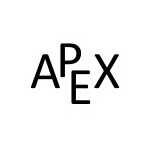1.5.1: Exercises 1.5
( \newcommand{\kernel}{\mathrm{null}\,}\)
Terms and Concepts
Exercise 1.5.1.1
Explain the relationship between logarithmic functions and exponential functions.
- Answer
-
For the same base, they are inverses of each other.
Exercise 1.5.1.2
What questions are you answering when you evaluate log5(25)?
- Answer
-
25 is 5 raised to what power?
Exercise 1.5.1.3
What is the value of the base for ln(x)?
- Answer
-
e
Exercise 1.5.1.4
Explain why logarithms help solve exponential statements.
- Answer
-
Logarithms help solve exponential statements because logarithms and exponentials are inverse functions.
Problems
Evaluate the given statement in exercises 1.5.1.5 – 1.5.1.8.
Exercise 1.5.1.5
log3(81)
- Answer
-
4
Exercise 1.5.1.6
ln(e5.7)
- Answer
-
5.7
Exercise 1.5.1.7
e−ln(x)
- Answer
-
1x
Exercise 1.5.1.8
4log2(22)
- Answer
-
16
Write the given statement as a single simplified logarithm in exercises 1.5.1.9 – 1.5.1.12.
Exercise 1.5.1.9
4log3(2x)−log3(y2)
- Answer
-
log3(16x4y2)
Exercise 1.5.1.10
23ln(x)+3ln(2y)
- Answer
-
ln(8x2/3y3)
Exercise 1.5.1.11
(2x)log2(3)+log2(5)
- Answer
-
log2(5(32x))
Exercise 1.5.1.12
3ln(xy)−2ln(x2y)
- Answer
-
ln(yx)
In exercises 1.5.1.13 – 1.5.1.17, solve the given problem for x, if possible. If a problem cannot be solved, explain why.
Exercise 1.5.1.13
5x=25
- Answer
-
x=2
Exercise 1.5.1.14
5x=−5
- Answer
-
Not possible; we cannot raise a positive number to a power and get a negative number.
Exercise 1.5.1.15
5x=0
- Answer
-
Not possible; we cannot raise a positive number to a power and get a zero.
Exercise 1.5.1.16
5x=0.2
- Answer
-
x=−1
Exercise 1.5.1.17
5x=1
- Answer
-
x=0
In exercises 1.5.1.18 – 1.5.1.25, solve the given problem for x.
Exercise 1.5.1.18
3x−6=2
- Answer
-
x=6+log3(2)
Exercise 1.5.1.19
42x−5=3
- Answer
-
x=5+log4(3)2
Exercise 1.5.1.20
25x+6=4
- Answer
-
x=−45
Exercise 1.5.1.21
6x+π=2
- Answer
-
x=log6(2)−π
Exercise 1.5.1.22
(16)−3x−2=36x+1
- Answer
-
x=0
Exercise 1.5.1.23
−15=−8ln(3x)+7
- Answer
-
x=13e11/4
Exercise 1.5.1.24
2x=3x−1
- Answer
-
x=−ln(3)ln(2)−ln(3)
Exercise 1.5.1.25
8=4ln(2x+5)
- Answer
-
x=e2−52


